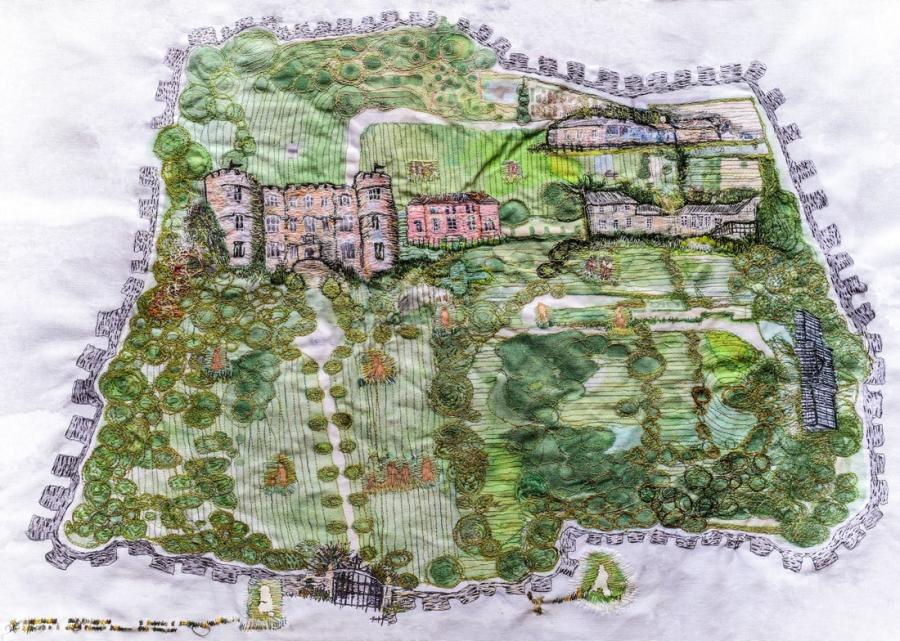Why do historic houses and their associated landscapes matter? What is their role in modern Wales? What can we do to ensure that they are preserved, relevant and enjoyed into the future?
In 2022-23, we received a Bangor University Impact and Innovation Award (IIA), allowing us to collaborate with Gregynog Hall & Estate to host a programme of workshops to find answers to these questions and discuss sustainable futures for historic houses in Wales.
The five workshops focused on the themes of:
1) Place: vision, brand & interpretation
2) Communities: audiences, engagement & social value
3) Stewardship: landscapes, buildings & environment
4) Experiences: programming, wellbeing & diversification
5) The cultural estate: learning, inspiration & enrichment
The project brought together partners and participants from across academia and the historic house, heritage, environmental, cultural and tourism sectors in Wales, to share and discuss challenges and opportunities relating to the management and futures of these sites.
Participating organisations included:
- Historic Houses Association
- The National Trust
- CFP – Landscape & Heritage Consultants
- Aberglasney Gardens
- Ruperra Castle Preservation Trust
- Haf Weighton – Textile Artist
- The Rhug Estate
- Llanrumney Hall Community Trust
- Natural Resources Wales
- Clough Williams-Ellis Foundation
- Iscoyd Park
- The Gregynog Trust
- The Penpont Estate
- The Glanusk Estate
- Keystone Heritage
- Welsh Historic Gardens Trust
- Rural Office Architecture

Historic houses are characteristically designated with ‘listed’ status: a formal recognition of their architectural or historical significance and an assertion that they should be protected and preserved for future generations. However, the practicalities of maintaining these historical buildings and achieving sustainable futures for these sites represents a major challenge for many historic house and estate owners and managers. These houses were built in and for a different age; innovation and diversification are encouraged by an acceptance that most cannot operate sustainably along pre-twentieth century lines. Irrespective of the ownership and management model (and there are many) historic houses are tending to incorporate multiple functions based on visitor attraction and public use: heritage site, tourist destination, events, hotel, restaurant or café, community space, farm shop; in addition to a range of activities and land uses associated with their parks, gardens and other outdoor spaces. Our project was grounded within this context of achieving sustainability for heritage through transformational change, with a particular focus on the sector in Wales.
The future of these sites is by no means secure. The coronavirus pandemic severely impacted this sector, severely reducing public access, on-site events and associated revenue generation. Similarly, it is all too easy to forget the astonishing number of country houses in Wales that were demolished or abandoned across the twentieth century. Despite the encouraging restoration success stories of recent years, a number of historic houses find themselves ‘at risk’ for a variety of reasons.

The project affirmed that historic houses and their adjoining parks and gardens can be key drivers for economic activity and heritage-based tourism, contributing significantly to the cultural life of their localities. In Wales, the Wellbeing & Future Generations Act provides a long-term policy context for promoting these objectives. The sustainability of most historic houses is intricately tied to the roles they perform in and for their communities. Historic houses in Wales have opportunities to do and offer things which contribute significantly towards the wellbeing goals of prosperity, resilience, health, cohesive communities, cultural vibrancy and thriving Welsh language. The project highlighted examples of best practice, ideas, challenges, needs within the sector and the opportunities for innovation.
The workshops brought together a varied group of partners who will work to ensure that these sites have a prominent role in and for their communities into the next generation.
Project Report to Follow.
